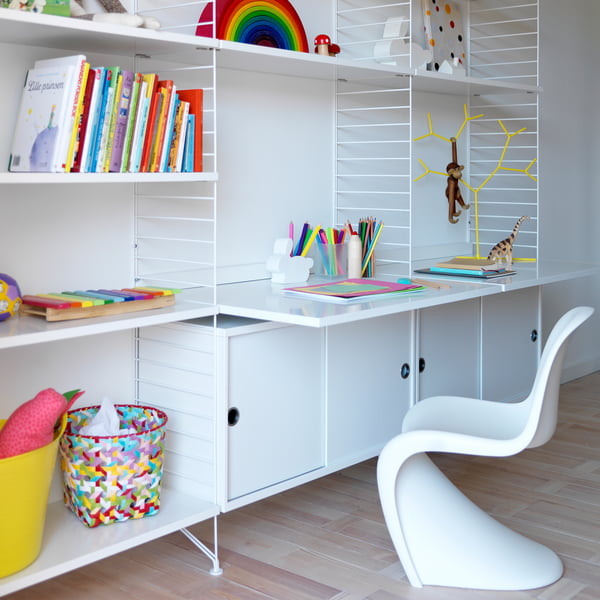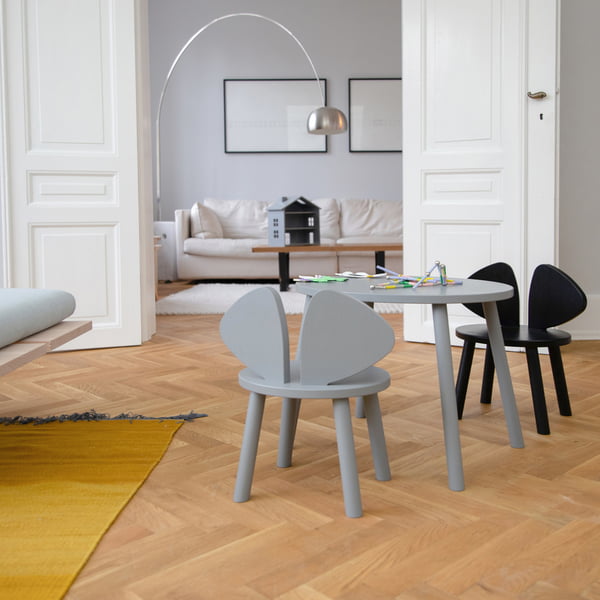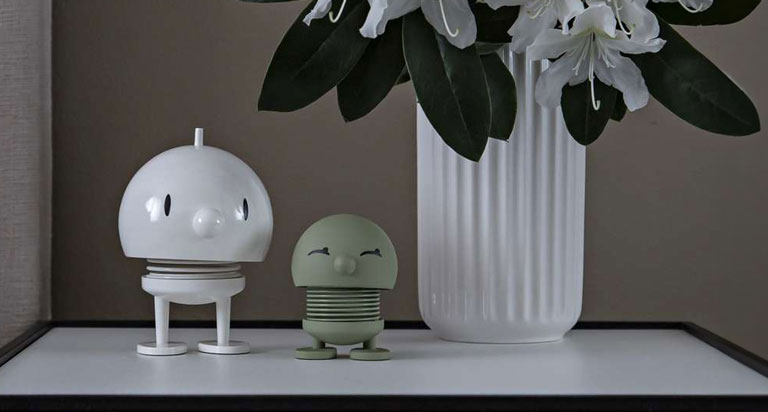Design children's tables - how to find the right model for your home
- Table shape and areas of use
- The right table height
- Ergonomic sitting at the table
- Material and sustainability
- Conclusion
From a certain age, children want to paint, do handicrafts or play independently at the table. With the right children's tables and chairs, you can support and encourage your child.
1. Table shape and areas of use
Basically, the shape of the table determines its use. And the older the child, the larger the tabletop should be.
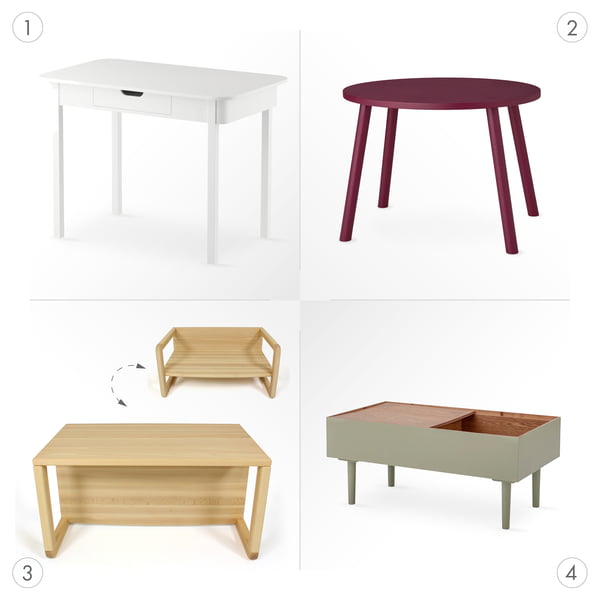
Children's desks
The classic children's desk is rectangular and is usually used as a desk for children. Ideally, the children's desk is height-adjustable (1) and grows with the child.
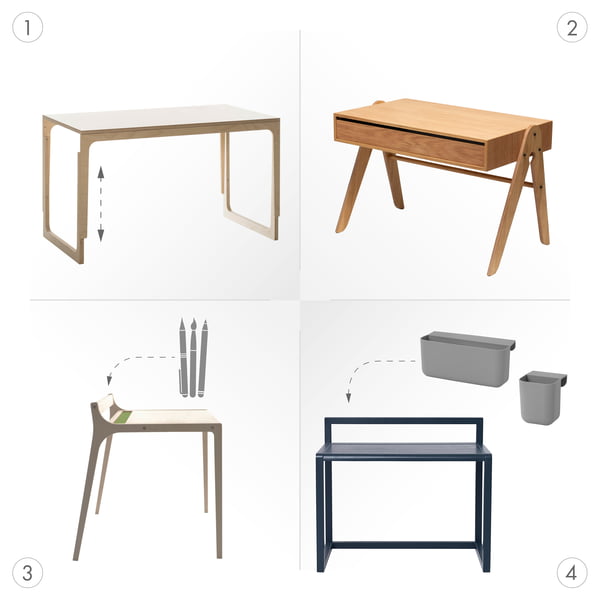
Children's table with storage space
Children's desks should offer sufficient storage space and shelves. Depending on the variant, children's desks are available with integrated drawers (2), compartments and pencil holders (3) or matching accessories such as pencil boxes (4). In this way, the table can be adapted according to the needs and is suitable for preschool and primary school children up to teenage age.
 "With multifunctional furniture systems, you can not only configure children's desks that grow with your child, but also customize their use in the children's room." - Viktoria, furnishing expert
"With multifunctional furniture systems, you can not only configure children's desks that grow with your child, but also customize their use in the children's room." - Viktoria, furnishing expert
To save space in small children's rooms, foldable desks or table tops that fold in are suitable.
Round children's table
A round children's table is the classic option for painting and crafts for kindergarten children. Children's seating groups provide conviviality when the children invite friends over or parents are asked to join them. Round children's tables have an inviting effect and can be placed particularly well in the room.
Children's tables should stand firmly on the floor and be tip-proof. For this reason, several table legs are often more suitable than a central leg.
Children's tables are available in a set with matching chairs. This creates a uniform look in the children's room.
Multifunctionality
Multifunctional furniture changes its function in the blink of an eye. For example, there are children's tables that can be converted from a table to a bench or from a table to a rocker simply by turning them.
Multi-purpose furniture is particularly suitable if there is not much space available in the children's room. They are particularly suitable for small children up to the age of 5.
Small tables
Small tables are suitable for small children at first for painting and handicrafts. Later they are converted and serve as storage space and side tables.
2. How high should a children's table be?
The table height depends on the seat height and thus on the height and proportions of the child. You can use the following measurements as a guide, for example.
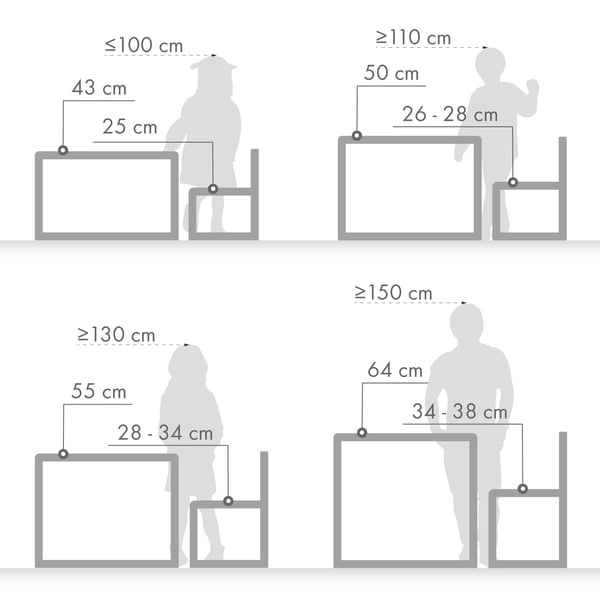
3. Ergonomic sitting
Since correct sitting is very important, especially when the child is growing, add a suitable children's chair to the children's table. Ideally, the table should be adaptable to the child and grow with the child.
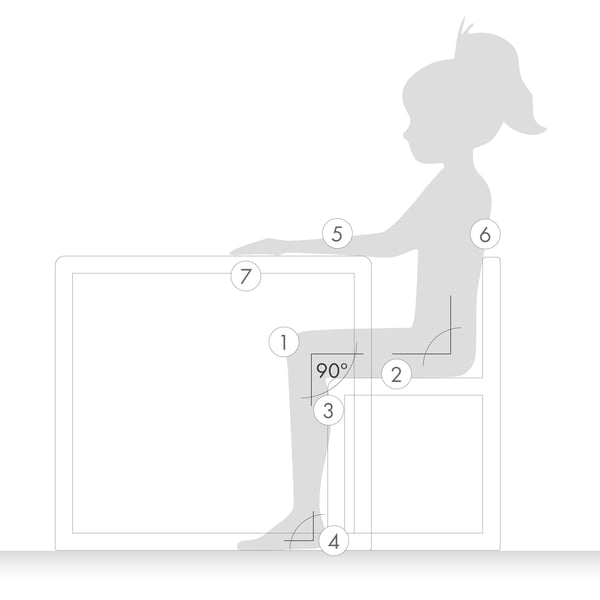
When sitting, the child's upper and lower legs should form a 90° angle (1). The thighs should rest on the seat (2), the backs of the knees should not touch the edge of the seat (3) and the knees and thighs should not come into contact with the table (7).
The feet are placed flat on the floor (4) or on a footrest while seated.
The forearms rest flat on the table surface and the shoulders are relaxed (5). The backrest supports the pelvis and shoulders (6).
4. Material and sustainability
Material
Children's tables are made of wood, wickerwork, plastic or metal, for example.
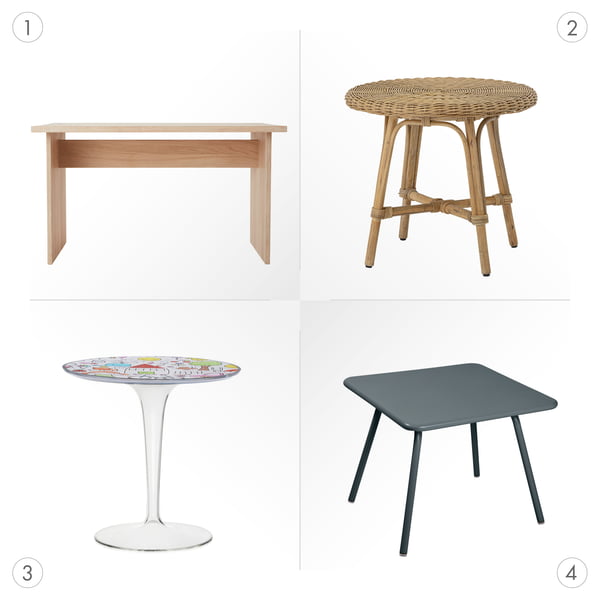
It would be an advantage if the children's table is lightweight, so that it can be easily moved when needed. When choosing, light materials such as plastic or rattan are recommended.
It is important that children's tables have washable surfaces. Materials such as plastic or metal can be easily cleaned with a damp cloth if drinks are spilled or crayons are drawn on the table.
Wood and metal are sturdy and stand out for their stability and durability. Made of aluminium, the children's tables are even suitable for the garden.
Harmful substances and safety
Toddlers in particular discover many things with their mouths - they also lick and nibble on pieces of furniture. If the choice falls on children's furniture made of natural materials such as wood, make sure that the wood is untreated. In addition, the surface should not have been treated with harmful varnishes.
Make sure that the corners and edges of children's tables are slightly rounded. This reduces the risk of injury.
Sustainability
Make sure that the products are manufactured in a sustainable manner. FSC-certified wooden furniture is sustainably produced, usually low in harmful substances and also stands out for its durability.
Choose furniture that grows with your child, is height-adjustable or pulls out, and can be used for many years.
You can also consider the place of manufacture. For example, products produced in Germany or Europe have shorter transport routes, which can reduce CO2 emissions.
5. Conclusion - what you should bear in mind when buying children's tables online
- Depending on the intended use, there are not only the classic children's desk but also children's seating groups with a round table, practical multifunctional furniture or small tables that can later be used as side tables.
- The height of the table depends on the seat height and thus on the height and proportions of the child. Ideally, the table should be height-adjustable.
- For more storage space in the children's room, children's tables with additional storage space in the form of pencil holders, drawers and shelves are ideal.
- The material of the table should be robust and the surface easily washable.
- To reduce the risk of injury, the children's table should have a firm base and the corners and edges should be slightly rounded.
- FSC-certified wooden furniture is sustainably produced and usually low in harmful substances. In addition, care should be taken that the surface of the wood is untreated.
- Many tables for children are sold in sets with matching children's chairs - this ensures a uniform look.
